The different tasks and work in the studio
The work in the studio actually has very little to do with the classical, romantic idea of a studio. In the studio, films are put into development after the journeys, negatives are mounted and cut to the appropriate length, pushed together and glued, indexes are sorted, we choose which pictures to use, the sketchbook is reworked and the pictures are framed when they come out of the lab. Projects like the one with the 64,000 snippets mean intensive work in the studio over a long period of time. There is also a lot of work on the computer, which can involve editing images in Photoshop, answering emails, maintaining social media and programmes such as Cobra, creating and maintaining websites or writing the newly launched blog, to list just a few examples. As you might already realise, my work in the studio has to do with almost everything other than producing new artworks. One problem in art is that there are too many artists and artworks, so it is harder to create a demand for your art, which makes it harder to be successful as an artist. Part of the work in the studio is to create and maintain something like a catalogue raisonné, which is quite important, although this is very neglected by many artists. In contrast to me as a photo artist, a painter works almost continuously on his artwork in the studio and sometimes does not do this alone, but has an assistant. So the work in the studio also differs depending on the area in which you specialise. However, many artists agree that a work of art, no matter what kind, only becomes a work of art when it has found a buyer; before that, it is merely a potential work of art.
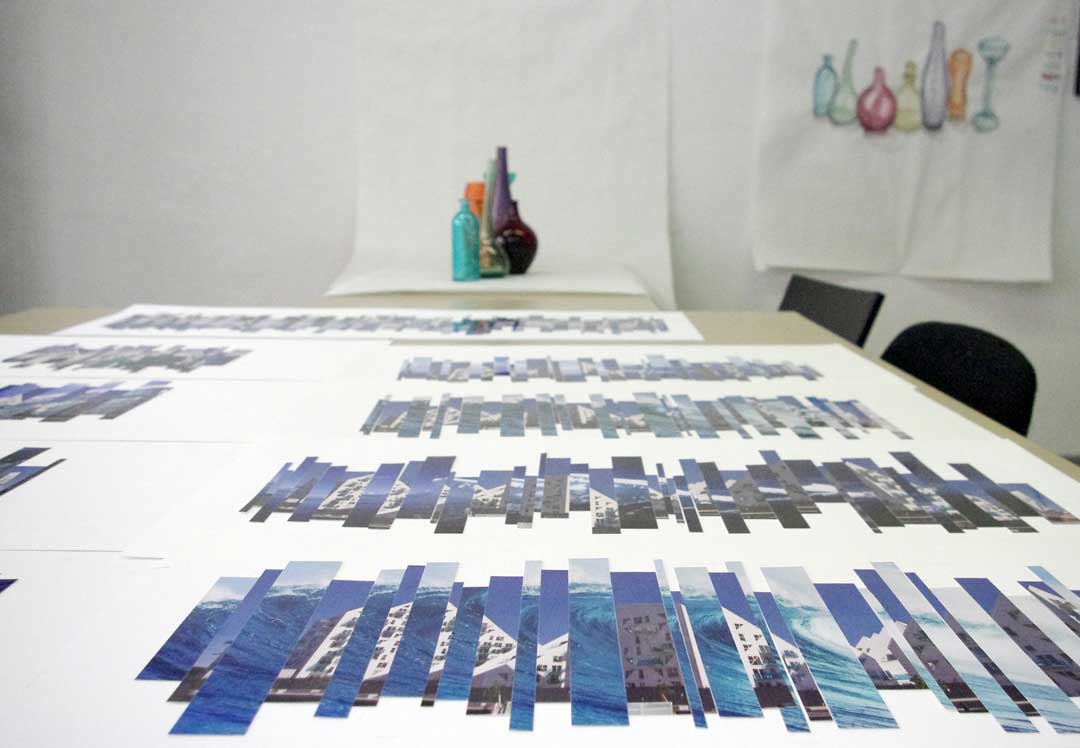
The development of Kellner's studio
But let us return to my work in the studio. In the first years of my studio, there was also a laboratory there to develop pictures myself. But I soon realised that I hardly had time to make the prints myself and that the studio's own laboratory was of little use to me and my work. I simply had too much other work, like the administration, answering emails, the interviews I gave and the trips I took. To really make the lab useful, I would have needed an employee and that's why the lab was disbanded around 2009 and 2010. As I mentioned earlier, you can't be a master of everything anyway, so it was really only helpful for me to dissolve my own lab and switch to specialist labs, as they can produce better prints than I could, especially in photography. In the meantime, I have also had a personal photo engineer for years with whom I work and who contributes to the quality of my work. In recent years, one particular work that has taken place in the studio has been portrait photography. There I have created "piece portraits" of different people, similar to my mosaic paintings. The special thing about this project is that the photography itself took place in the studio, which is of course never the case otherwise. I still have several ideas to realise in the area of portraits for work in the studio, but I need more time for this and above all I need much larger exhibition plans for larger museums and galleries. These museums and galleries would then also have to be willing to try out new things with me as an artist and they would have to release me for a certain period of time. That means that they pay me for the time I spend working intensively on the exhibition.
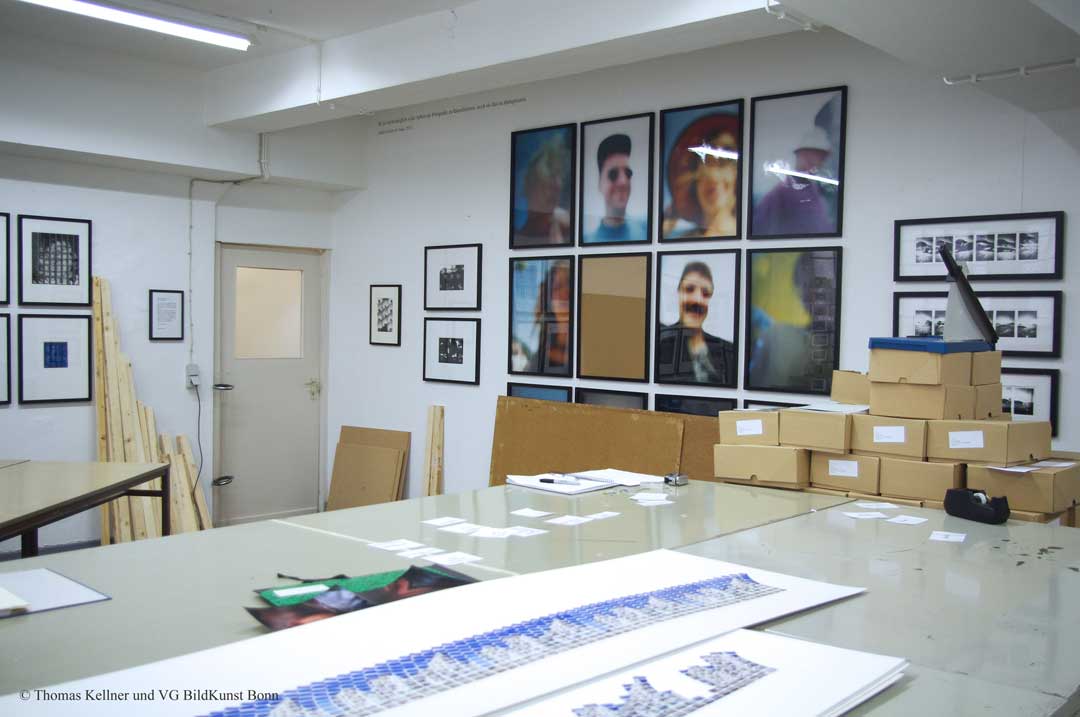
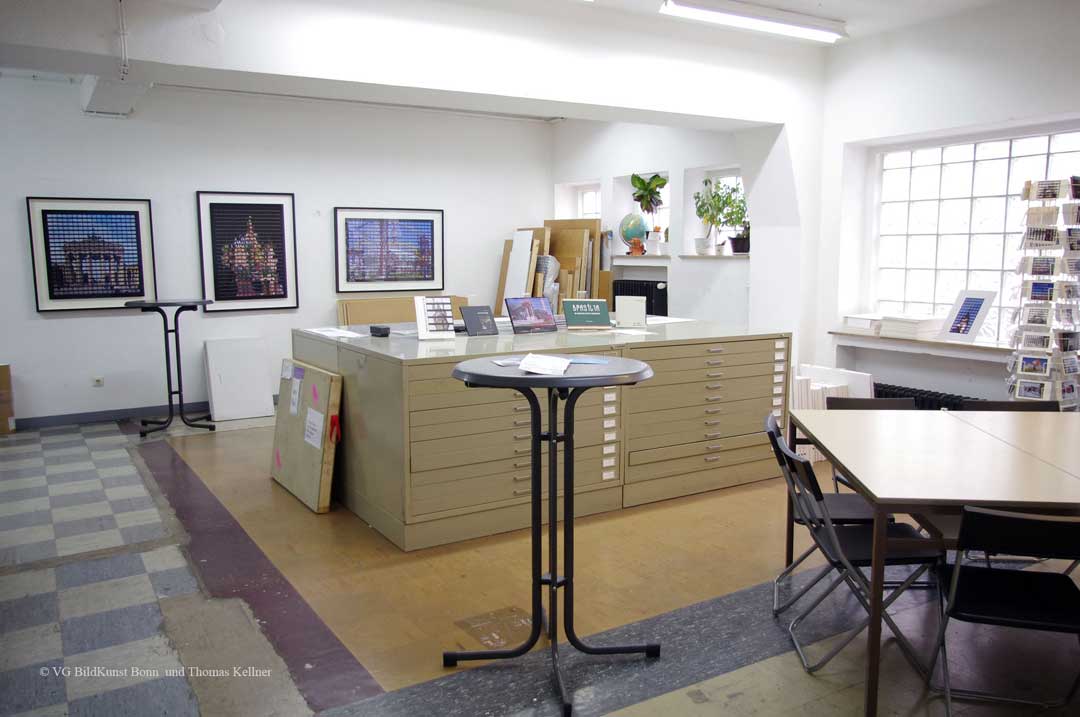
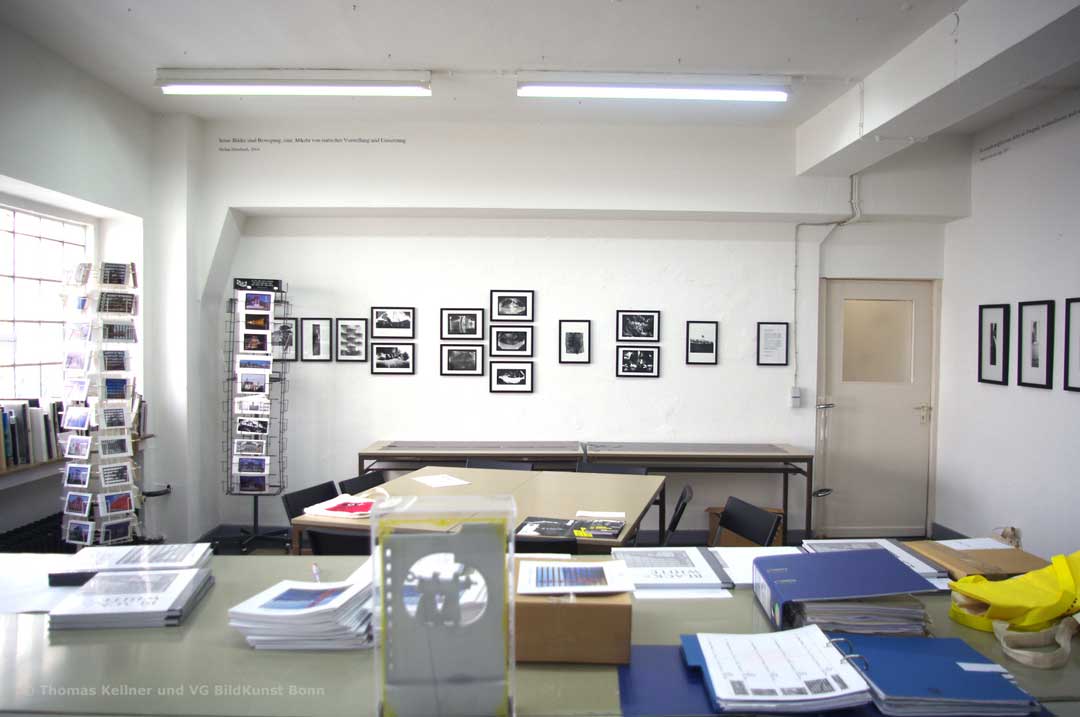
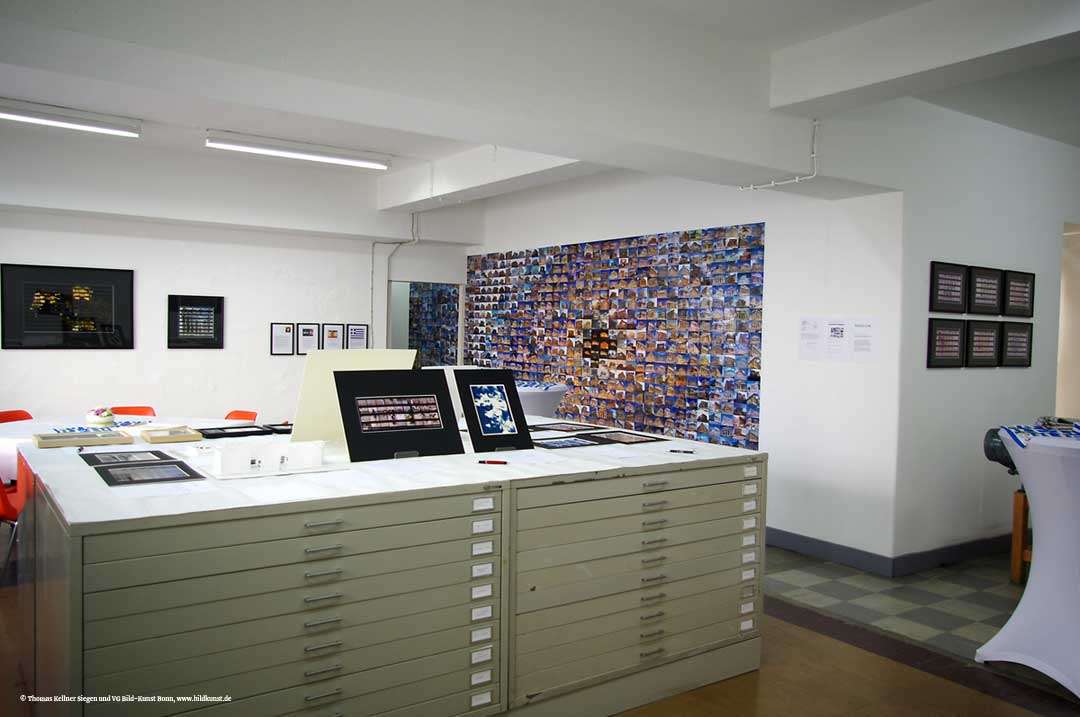
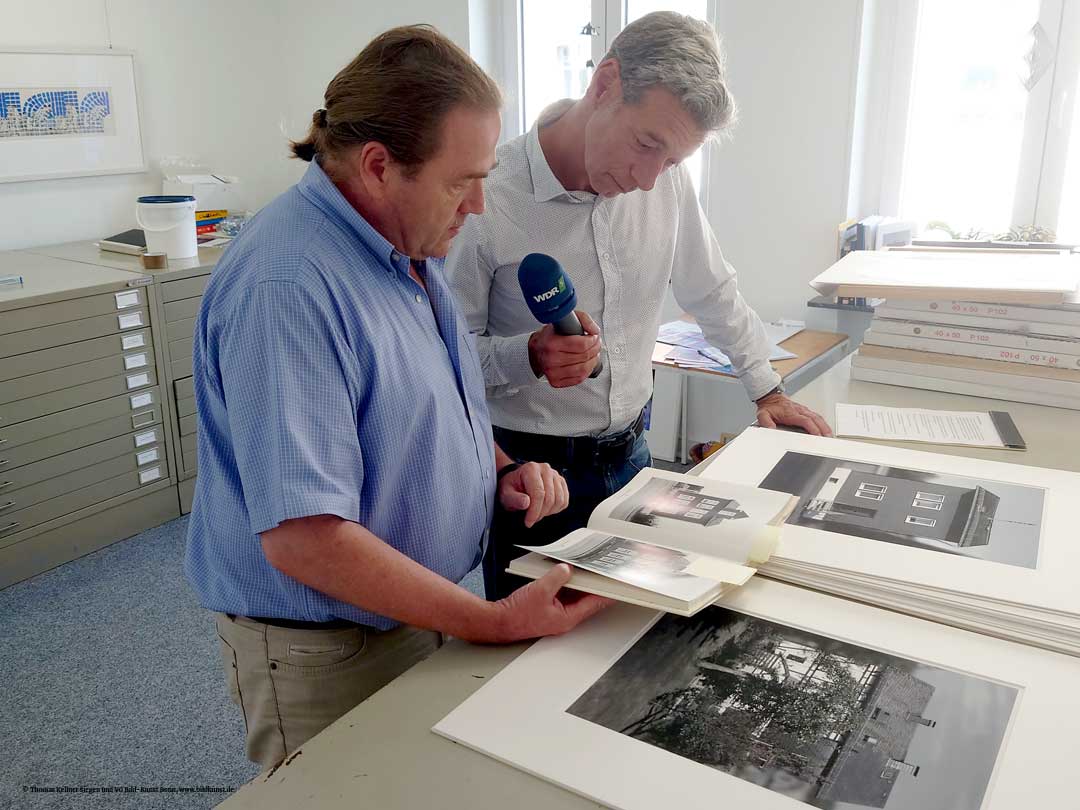
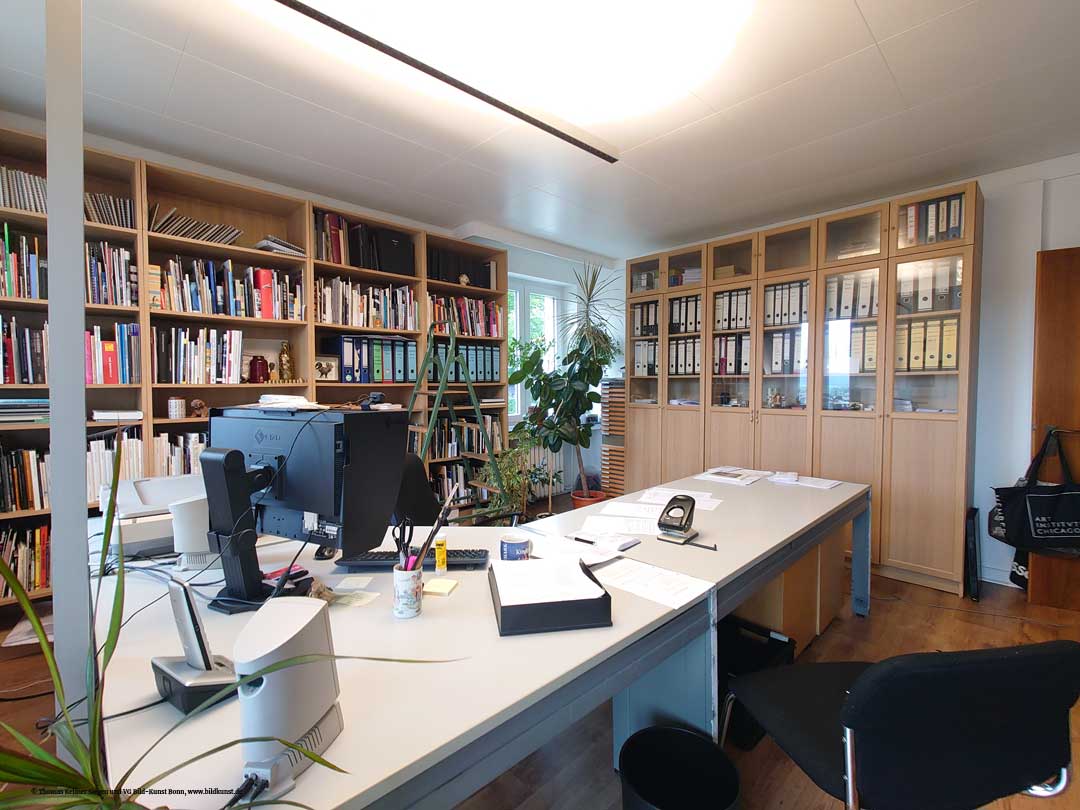
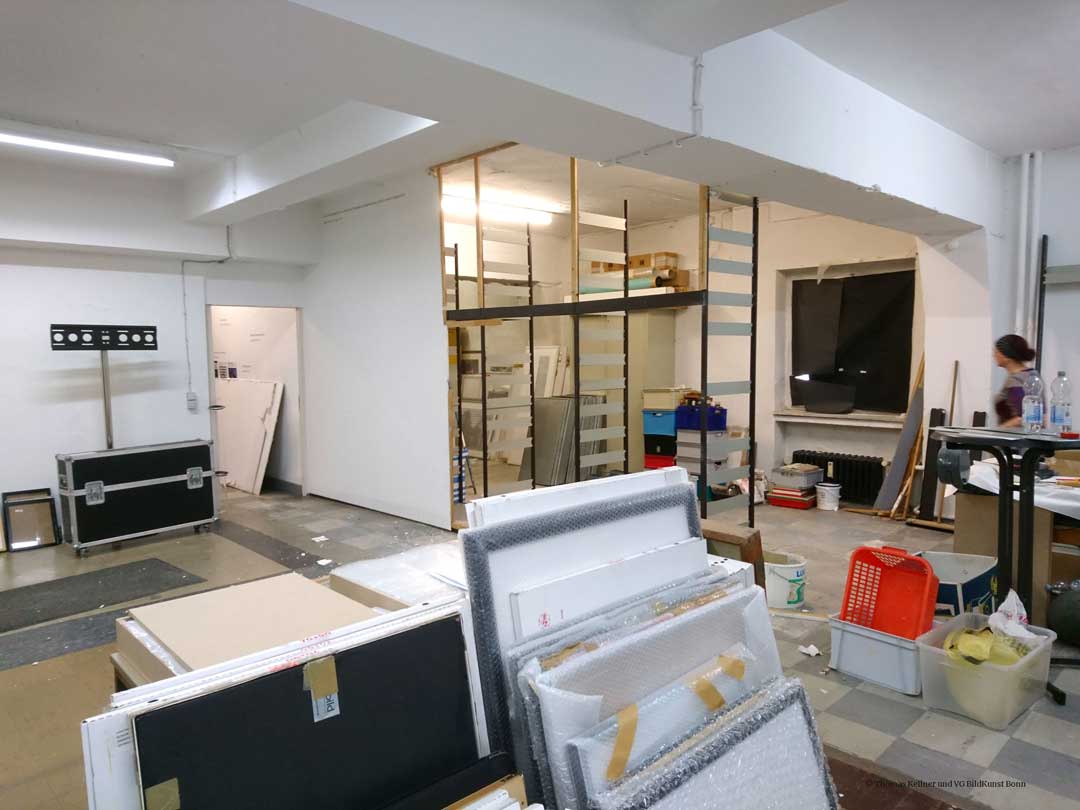
The example of a working day
To illustrate working in the studio a little, I would like to describe an example working day. My day starts at six o'clock in the morning, in the hour before my interns arrive I have time to check my emails and chat messages and to answer and sort them. I also write invoices, for example the one for the painting that was sold at the Kunstverein Aschaffenburg, which we will visit later in the day. The painting was made in the city of Bilbao, the buyer had a personal relationship with this city. For me, the special thing about this painting is that because it is black and white and not coloured, it almost looks like graphite and is amazingly close to the material of titanium. The painting actually costs 2,000 euros, but in the end I only have 1,200 left over, because I gave away the frame and the passe-partout, 400 euros go to VAT and of the 1,600 euros net, another 25 percent belongs to the art association. Before we set off for the Kunstverein in Aschaffenburg, I go through in my head whether we have everything. We need the tripod, the cameras, the lenses, the gimbal and something to eat, which my wife Helga has kindly prepared. After I've gone through the equipment, there's a short exchange with the team, then we're off. On the way, I go through a blog post with an intern, I try to make the car my office and use the time effectively with thoughts I discuss with my interns. It's similar to travelling, I always have to travel for several days and sometimes I only have to take one picture, but of course the weather has to be right for that, hence the several day trip. In this free time I work on ideas, texts and websites. When we arrived in Aschaffenburg, we first had to rethink all our plans, then we shot a film about the exhibition. Whether we will use the material is still in question, but at least we have documented the exhibition. Whether there is added value in the material will be discussed in the near future. While I begin to dismantle the majority of the exhibition in Aschaffenburg, my interns are filming the Eiffel Towers in intensive picture viewing sessions. The dismantling of the exhibitions usually goes quickly, but I found it a pity that the managing director was not there in Aschaffenburg. For me, the personal aspect is always very important, for example, inviting someone to dinner, because the contacts you make through the exhibitions are also the multipliers for the future and still attract attention, for example through press articles. I also have to manage the renting of the flat in our house, there is always stress there, because the new tenants would prefer to put their things down now, but the old tenants haven't even moved out completely yet. On the way back, we visited the old tenant who is pregnant and brought her a mirror. A farewell dinner with the previous tenants is planned for the weekend. On the way, I received a surprising e-mail from the Elbphilharmonie magazine asking me to be their photographer. It's uncertain whether this job will work out, and there's still a need for discussion about the costs and payment, but something like this can come in very handy if the client and I come to an agreement. An example of this happened in 2015, through an FAZ article about the black and white exhibition, the head of the magazine approached me and asked me to photograph a fashion spread. Of course, the technology, the scans, the material and the studio had to be financed, but fortunately they agreed, it was a really interesting and new experience. In my head, on the way back to the studio, I'm busy the whole time with the request for the Elbphilharmonie and thinking about how I could best capture it pictorially, since most of the pictures were shot from the water, which is out of the question for me, since the tripod can't stand stable there. Then I think about whether a picture of the interior could also be very effective, I already had similar plans in Argentina and Mexico. Then I have more questions, like how to get the key to the Elbphilharmonie and get into the interior, and whether it fits into a series or not. When we get home, we first pack away the cameras, charge the batteries so that they are always ready for use and store the pictures in the studio for the next 14 days. In a fortnight we will be back in Düren and have to visit clients, and then it will already be evening again. On another day, me and my interns had a video shoot at Ejot and on yet another day I had a meeting with Prof. Dr. Autsch from Paderborn University, where the topic was street art. So despite all the administrative and social media work, my working days in the studio are quite varied and something new and unexpected happens every day.
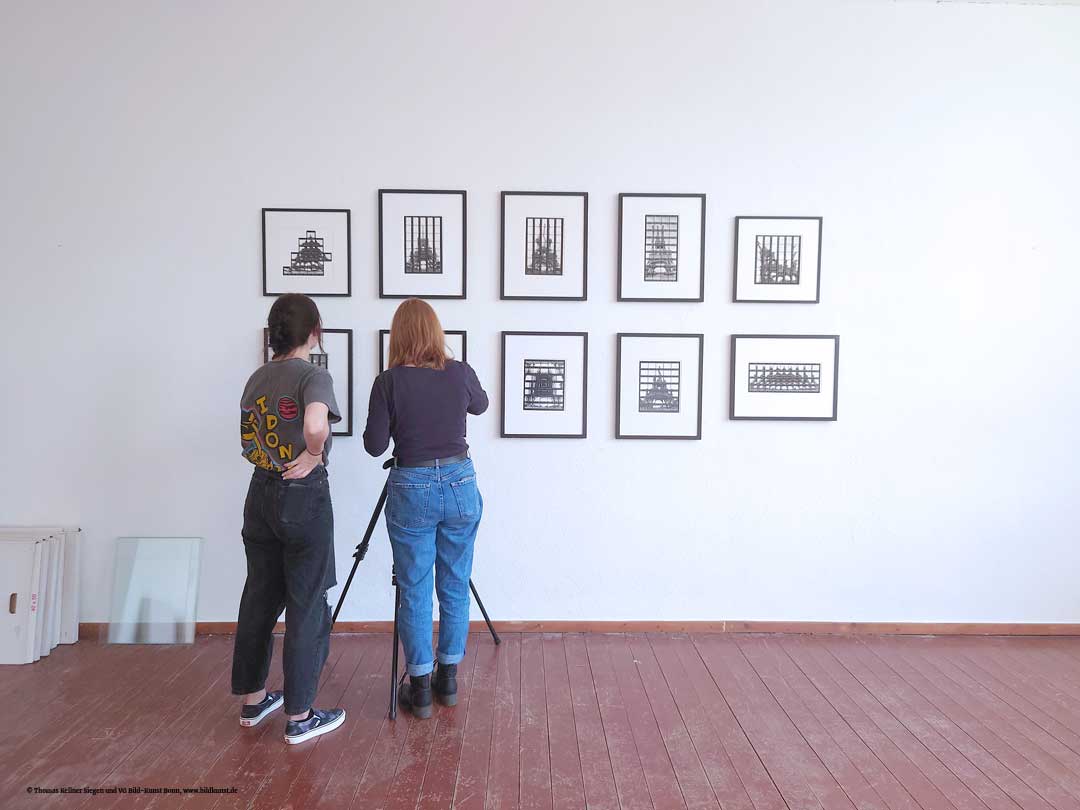
Author
Hannah Stöcking, 07.11.2001, Bottrop
Studies: Art History and Literature, Culture, Media
Internship: 2021 at Thomas Kellners Studio
Special Interests: Art, Literature, Music, Festivals & Concerts








